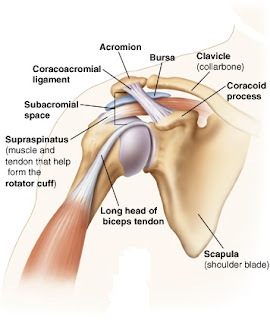RESISTANCE TRAINING- Then and now.
“You never
know how strong you are, until being strong is the only choice you have”.
Earlier,
whenever we heard of the term “resistance training” the first thing that used
to come to our minds was those huge, bulky, sweaty men with carved muscles
lifting tones of weights beyond our strength. But times have changed,
resistance training is looked upon and used very differently and efficiently
now. Men and women are equally active and benefited with the resistance
exercises nowadays.
Resistance
training in simple words is the exercise done with the help of weights i.e. an
external opposing force most commonly in the form of dumbbells, weight cuffs,
therabands, medicine balls, barbells, water bottles, bricks, etc. resistance
training is now in the limelight as it has shown beneficial results over the
decade.
Resistance
exercises allows your muscles (skeletal muscles) to contract voluntarily. The
contraction is helping in gaining muscle strength, muscle mass, muscle tone and
endurance. Resistance training is a major part of rehabilitation program. After
recovery from an injury which resulted in several days of immobility and loss
of muscle function. Teaching Strengthening exercises is an important step to be
followed by a physiotherapist after the signs and symptoms of the injury or any
other musculoskeletal condition subsides. It helps regain the muscle power and
strength which was once lost.
Resistance
exercises can take some major forms like;
Open kinetic
chain exercises and closed kinetic chain exercises.
Open kinetic
chain exercises are those in which the hands and feet can be freely moved. The
open kinetic chain exercises allows a limited range of muscles of the body to
be benefited. Whereas the closed chain exercises includes fixing of the body
parts and hence more muscles can be put to use. Open chain exercises can be
bicep curls, triceps extensions, bench press, leg extensions, etc. closed chain
exercises include push-ups, pull-ups, dips, planks, squats, lunges etc. closed
chain exercises enables a co-contraction of many different muscles.
Another type
of resistance training can be done with the help of free weights, this is one
the most effective type of resistance exercises. As there is an increased
amount of resistance in the form of an external force. It increases the amount
of work to be done by both primary and secondary muscles (stabilizers).
One more
type of resistance exercises may be with the help of resistance machines which
are usually available in gyms and rehabilitation centers. It is a good
alternative for beginners who has very less muscle strength as it provides a
stable and safe mode of exercise. There is no chance of fall of weight on your
legs while you cannot hold it efficiently due to weak muscles. There are less
number of steps that you need to remember as well as the exercises will be
performed only in a certain limit set on the machines. But once the patient
gains enough muscle strength it becomes important to move to the next step and
start taking up challenges as this type of exercise becomes an easier one. Seated
chest press, seated shoulder press, seated leg press, rowing machine etc. can
be found in a gym or a rehabilitation center set up.
‘Aqua-therapy’
commonly called as ‘hydrotherapy’ provides an excellent amount of resistance to
the limbs along with low impact on joints due to water’s property of buoyancy.
Resistance is provided in water against its flow in all directions. There is a
higher amount of resistance provided by the water as compared to exercising on
land. And hence a better resistance training can be achieved. One more
significance of exercise in water is that there are no weights no machines to
tolerate while exercising.
Resistance
training at later stages and higher levels may lead to micro-traumas in the
muscle fibers. But that’s not a matter of concern as the micro-traumas
eventually gets healed on their own on taking some rest. So here, rest also
becomes an important factor after every exercise session as it promotes
healing.
Before
beginning with the resistance training there are certain measures that you must
keep in mind. Use the right weight, begin
with less amount of weight in initial stages and gradually increase the weight
in later stages. Beginning up with the large amount of weight might cause
injury and increased pain also, too less weight may not show results and there
might not be any progress and improvement in the muscle strength. Pay attention
to the frequency, training same muscle repeatedly may leads to a reduced muscle
growth. Give your muscles break intervals of 2-3 days.
Regaining
lost muscle strength after a trauma or injury is a great achievement. Whenever
a patient comes to a physiotherapist with a weak muscle helping that person to
regain his muscle strength is an achievement for a physiotherapist too. Both
the patient and the physiotherapist gain more strength and confidence. Know a
little more about resistance training and try to implement it in your life in
the right way.
Take Care,
Jasrah
Javed.




Comments